A perfect mini break in England’s smallest city
The ancient city of Wells in the beautiful county of Somerset is nestled in southwest England on the edge of the Mendip Hills. Wells truly is a delightful location to enjoy a relaxing, cultural mini break, we fell in love with it immediately.
Wells is a perfect place to visit throughout all seasons of the year, and for fans of the movie Hot Fuzz, it is a must to explore. The historic centre has comical references to the film throughout, which will bring a smile to your face.
Wells is exceptionally picturesque and historic and often floats beneath the radar of many visitors. Regularly, Wells is overlooked by travellers seeking out the Roman city of Bath or the vibrant streets of Bristol; however, for a compact city break, Wells is ideal.
The cathedral city of Wells is easily navigated on foot, with many of its heritage sights and landmarks just a short stroll from Market Place
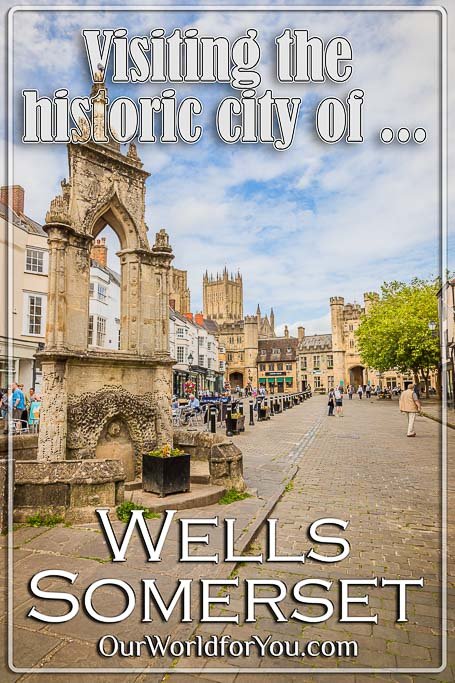
Where is Wells?
How to get to Wells
- By Car
The most favoured mode of transport to Wells is by car, mainly because there are no mainline railway stations. The main motorway routes into Wells are the A39, A371, and the A303.
- By Coach
You can travel to Wells via National Express and Berrys Coaches, which offers a direct service from London.
- By Train
There are no direct train services to Wells; however, there are frequent bus services from nearby towns and cities.
- By air
The closest airport to Wells is Bristol Airport. From here, it is easy to hire a car from Rental Cars, and you’ll be in Wells in just over 30 minutes.
A brief history of Wells
Well, well, well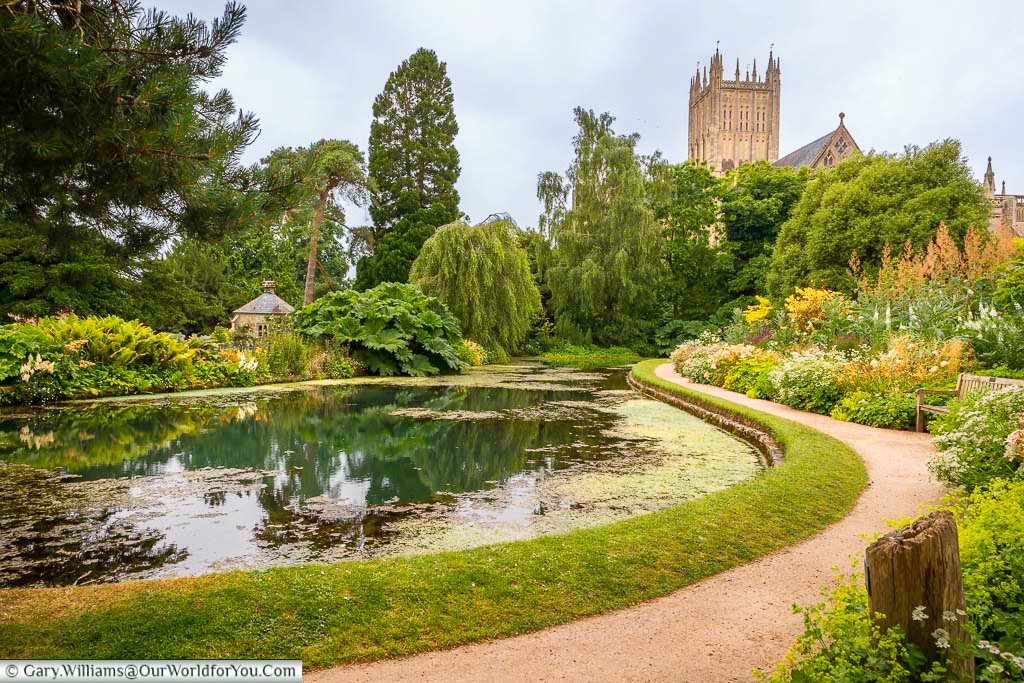
Wells gained its city status during medieval times when the magnificent cathedral was constructed in 1175. Today, Wells boasts of being England’s smallest city, although the City of London also makes a similar claim. But hey, who wants to be second after all.
The name Wells is derived from the three wells within the ancient city. One well is in the Market Place, and two are within the grounds of the Bishop’s Palace. They are dedicated to Saint Andrew.
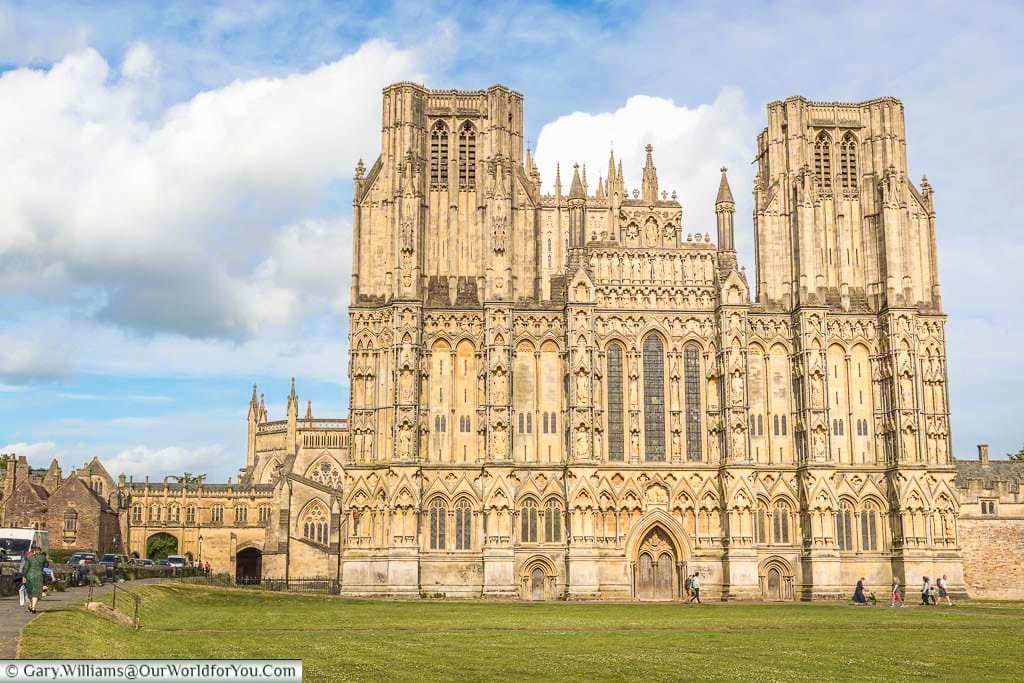
The present-day cathedral and the Bishop’s Palace were built during the 13th century; the palace is still the residence of the current bishop of Bath and Wells.
Wells Cathedral School was founded in 909 and is one of five UK schools for the musically talented; Wells was also listed in the Domesday Book of 1086.
Stay informed
Exploring the city of Wells
History at your feetWells is perfect for a laid-back, hassle-free city break, it is incredibly easy to explore on foot and extremely compact, which isn’t surprising for England’s smallest city. However, what it lacks in stature is made up tenfold in charm and friendliness.
I can honestly say it was an absolute delight visiting Wells, and we wouldn’t hesitate to return again. There’s a treat to be found around every historic corner.
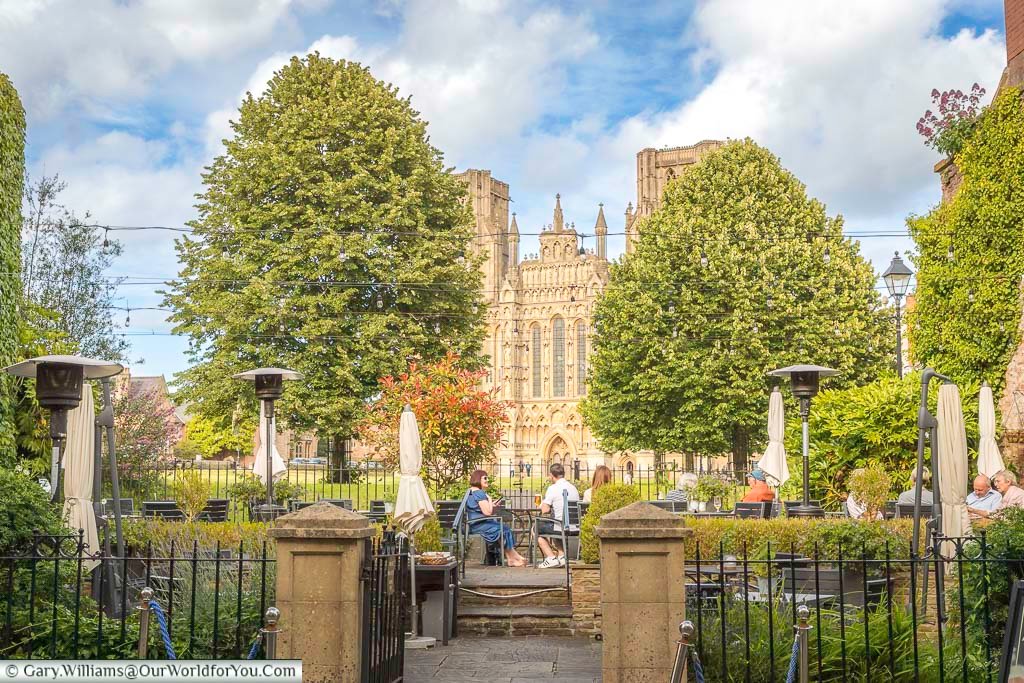
We stayed in the Swan Hotel along Sadler Street, which was just a hop, skip, and a jump from Market Place. It also had stunning views across to Wells Cathedral and the Close.
We started our tour of Wells from the iconic Market Place. It’s so quaint that it’ll undoubtedly bring a smile to your face. It feels like you’re in an open-air street museum. Alongside the picturesque square are independent cafés and boutiques, tumbling flower displays, historic inns, and ancient architecture.
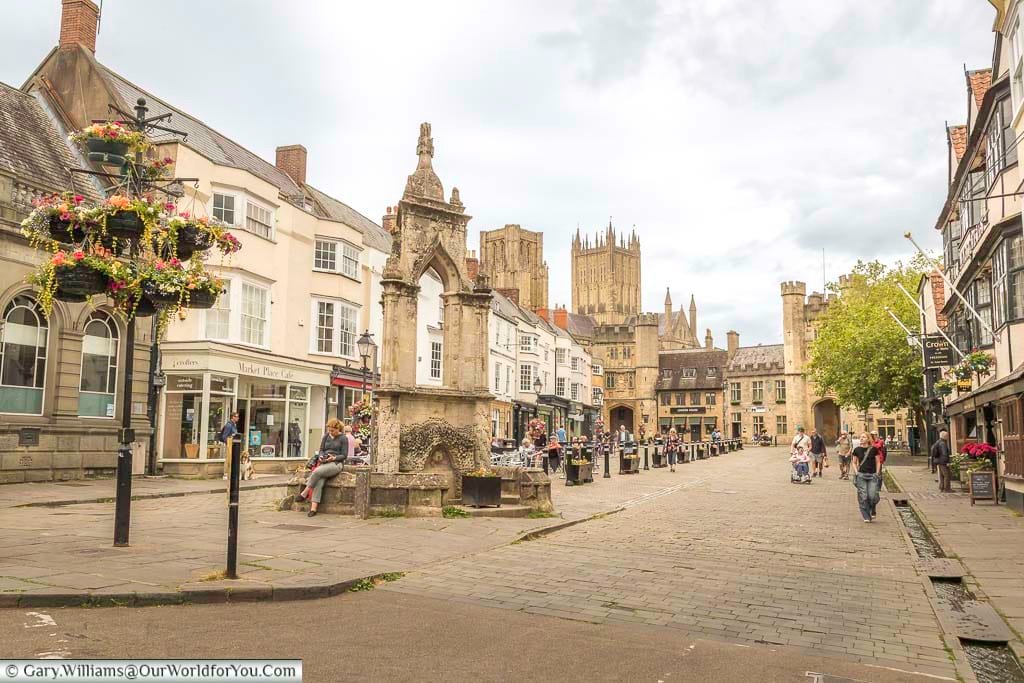
Wells Market Cross and Fountain are at the bottom of the pedestrianised Market Place. This eye-catching fountain was built in 1797 and replaced Bishop Beckynton’s earlier water conduit, which had supplied the marketplace with water since the 15th century.
The water in the fountain is supplied by a gravity-fed pump from the wells within the Bishop’s Palace. Mind your footing as you step over the water gullies that gurgle through Market Place and High Street.

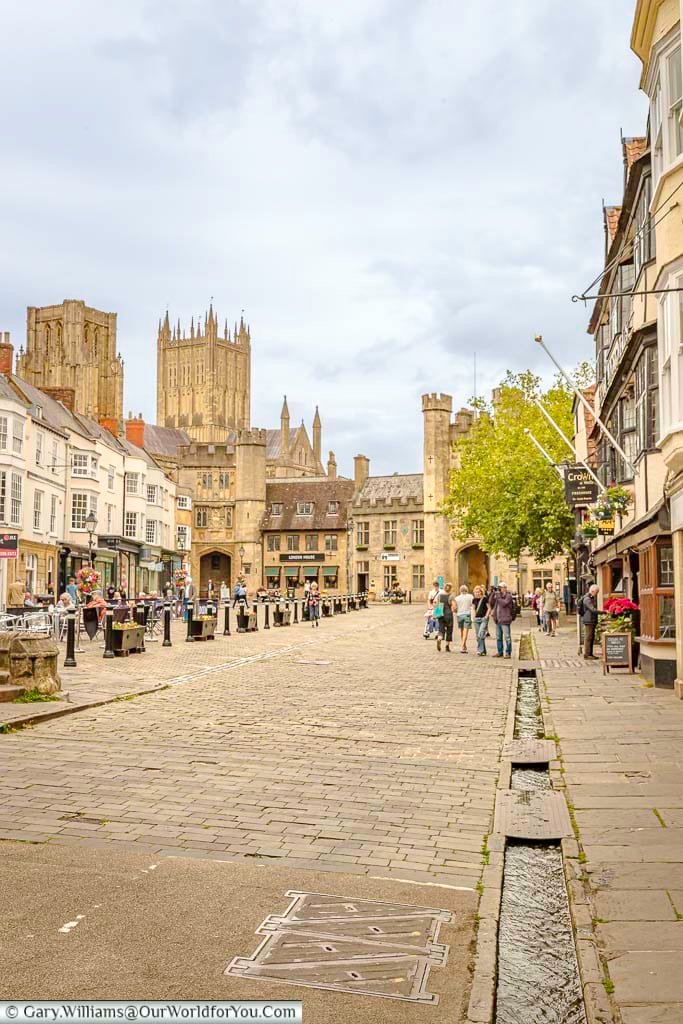
Strolling up through Market Place is enchanting; it’s lovely to see places that are loved and preserved in this way. The Crown at Wells is quite a focal point in the square and is believed to have been built around 1450 and were originally houses.
The Crown Inn has a fascinating history. It was a bar at The Crown Coaching Inn and a separate inn for The Royal Oak. In the 1930s, it was converted into a hotel, and during market days, up to 70 horses were stabled at the rear of the building.
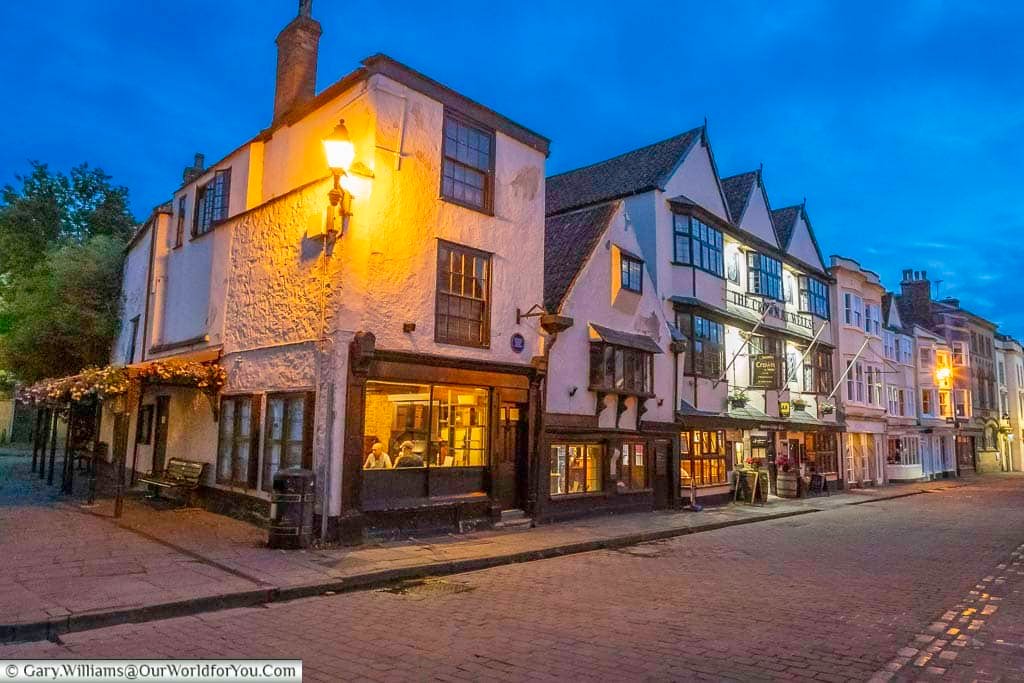
During WWII, it was a temporary home for troops returning from conflicts; after recuperation, they were sent off to fight once again. In 1993, The Crown was in receivership and boarded up; thanks to a local couple, they purchased the inn and made it into a welcoming pub for all to enjoy.
You may recognise the exterior of The Crown, as it was used in the movie Hot Fuzz, directed by Edgar Wright, who was educated in Wells.
Where to stay in Wells
This charming 15th-century coaching inn is located in the beating heart of Wells. It has plenty of character and friendly staff.
Onsite parking is available and complimentary, although limited. We have a large EV and were able to charge it overnight for free.
More to discover in Wells Market Place
Literally a movie set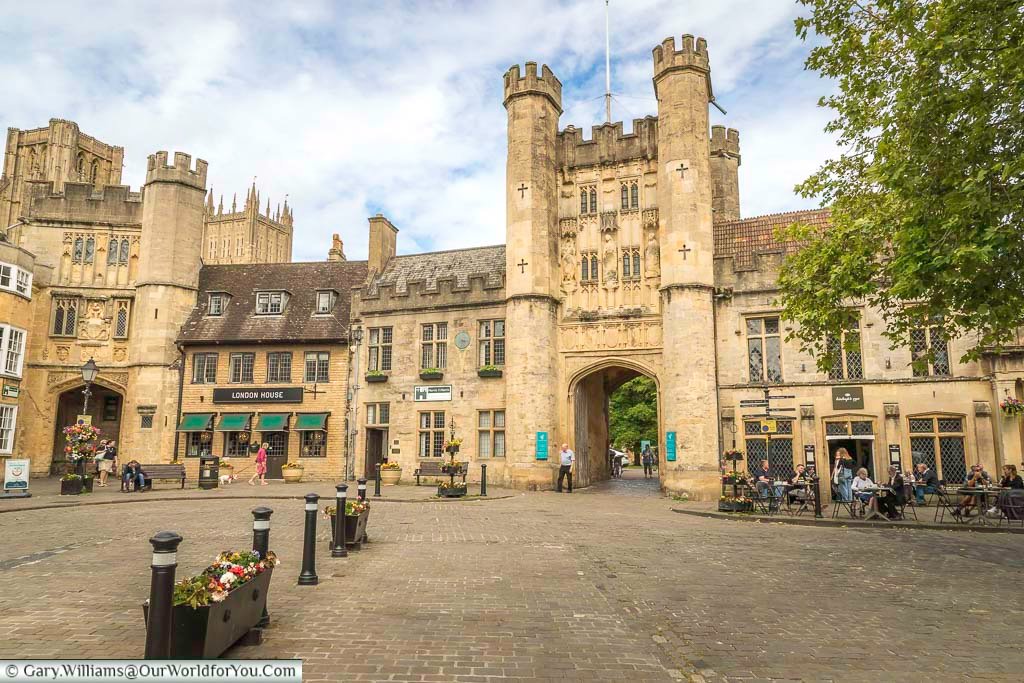
You can while away hours around the market square, just sitting and watching the world pass by while enjoying a scrumptious cake and a coffee.
The two archways you are greeted with at the top of the square are the Penniless Porch and the Bishop’s Eye, which form entrances into the walled precinct of the Cathedral and Bishop’s Palace. The Penniless Porch on the left was erected around 1450 by the Bishop of Beckynton, a city benefactor. Here, beggars used to ask for alms.
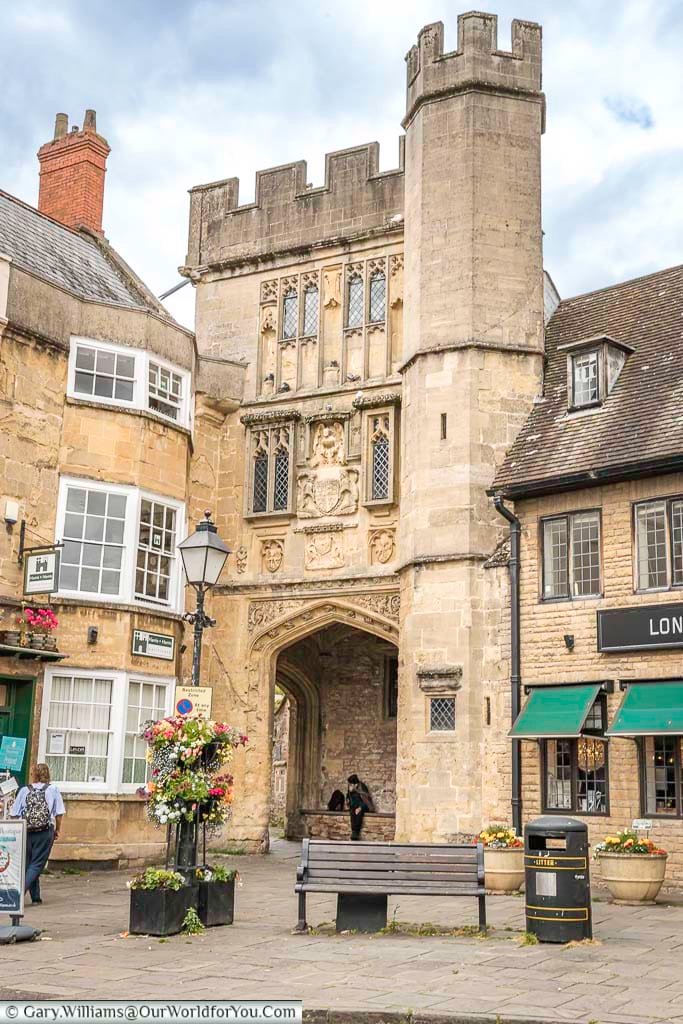
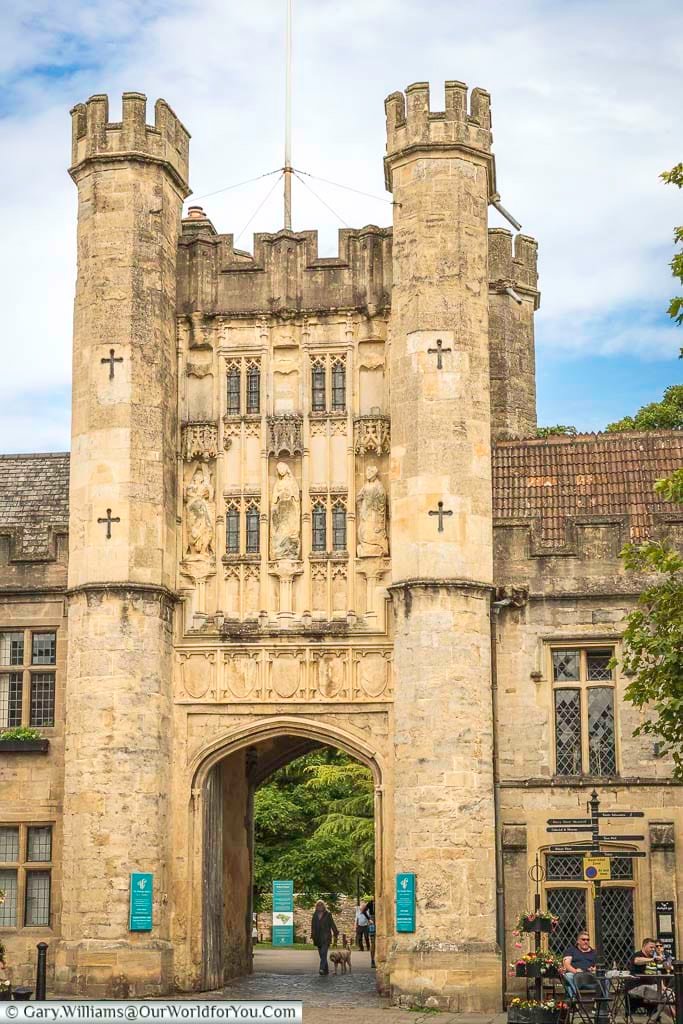
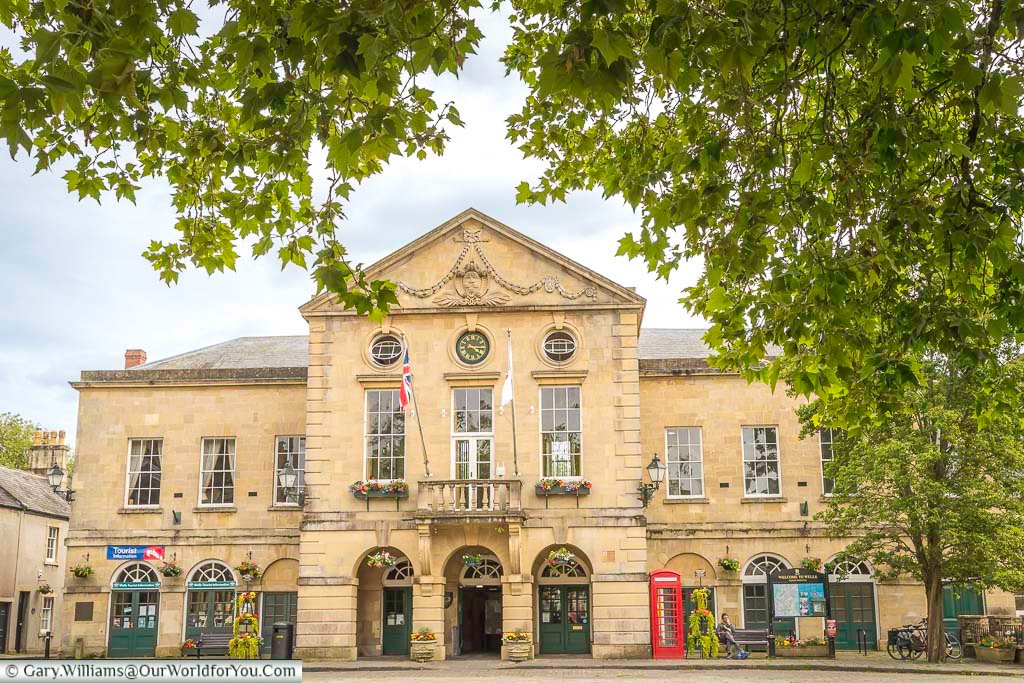
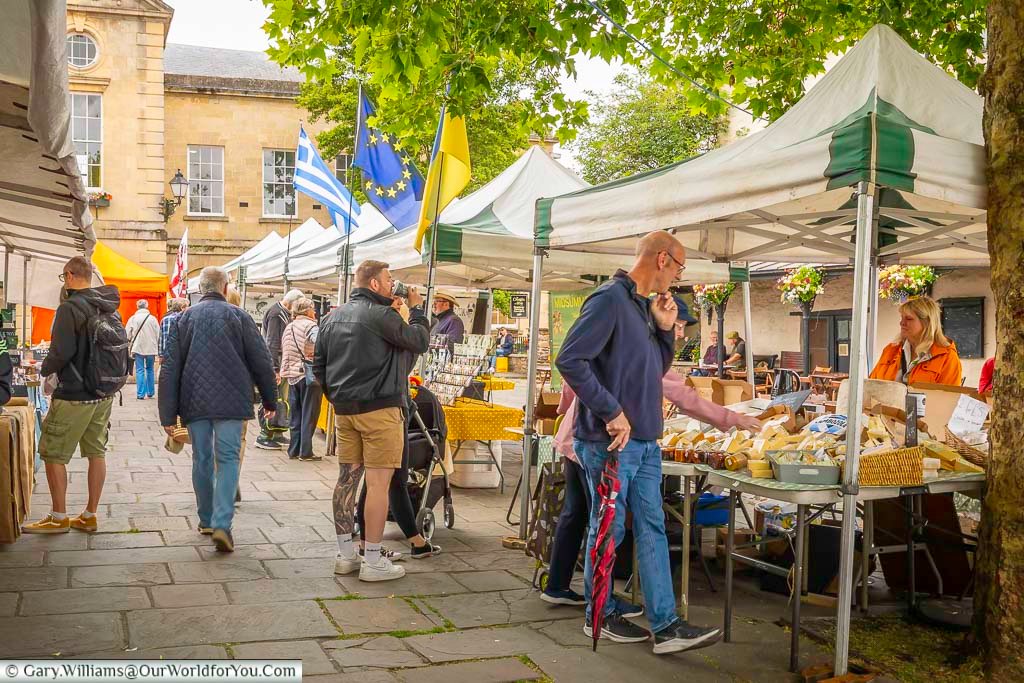
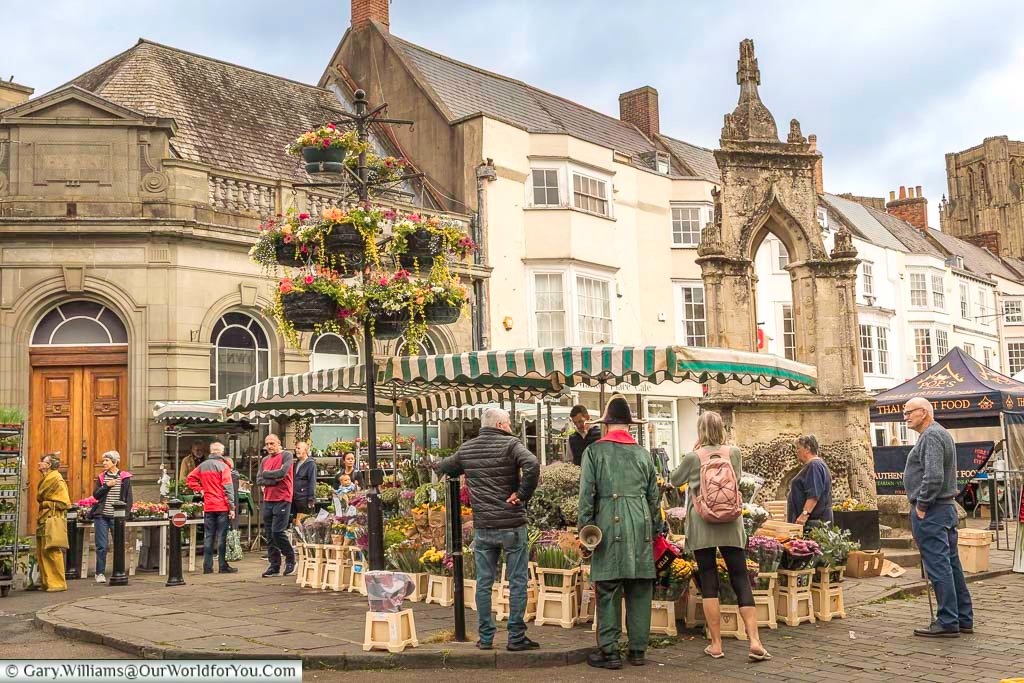
If you're intrigued to visit the beautiful city of Wells and the county of Somerset, then why not check out The Rough Guide to Bath, Bristol & Somerset. Full of helpful advice, interesting facts and time-saving tips.
You can pick it up for your Kindle or in good old paperback.
Visiting Wells Cathedral
A sight to behold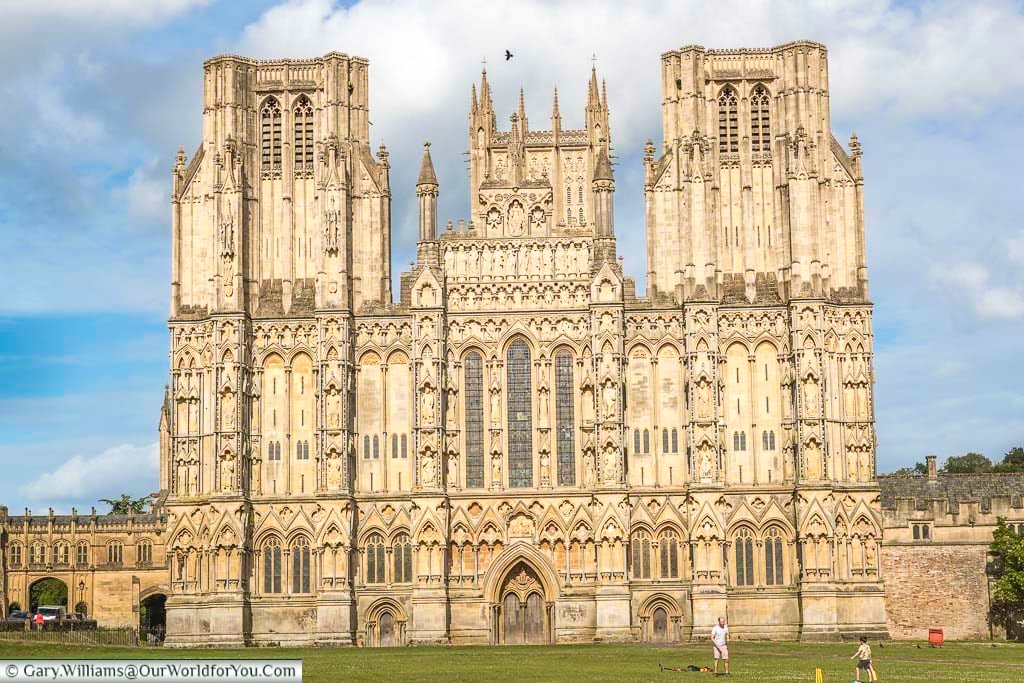
The Cathedral Church of St Andrew was built in 1175 as a Roman Catholic cathedral. It was erected on the same site as the previous church of 705. When King Henry VIII parted from acrimoniously Rome, Wells Cathedral became an Anglican Cathedral and luckily escaped destruction from the Dissolution of the Monasteries.
The Gothic façade on the cathedral's west front is stunning, and the details are incredibly intricate, especially the 300 sculptured figures.
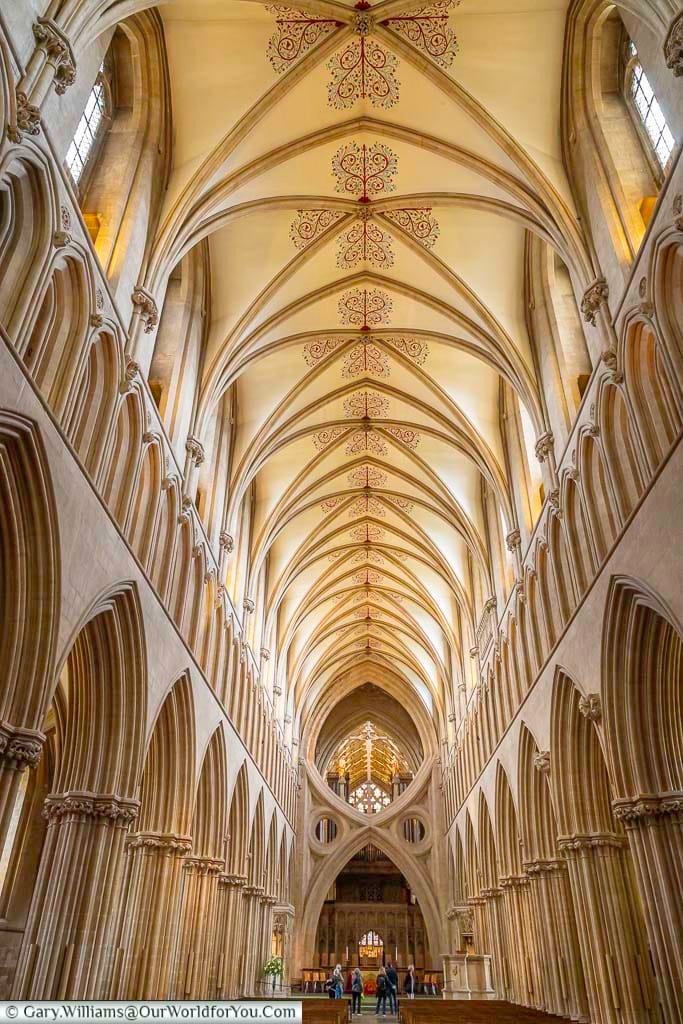
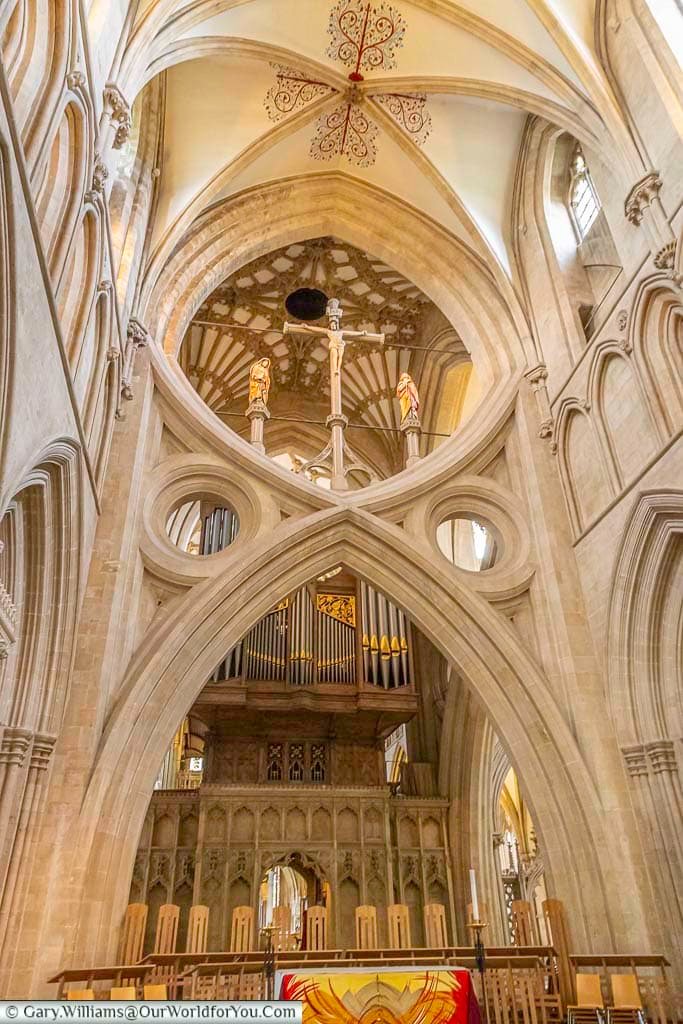
As soon as you enter the central nave of Wells Cathedral, it is a sight to behold. Your eyes are immediately drawn to the Scissor Arches in the centre of the cathedral. It’s the simplicity of the sweeping stone lines that are breathtaking.
At first glance, you would believe that arches are a modern design; however, these striking medieval arcs were built between 1338 and 1348 to prevent the tower foundations from sinking.
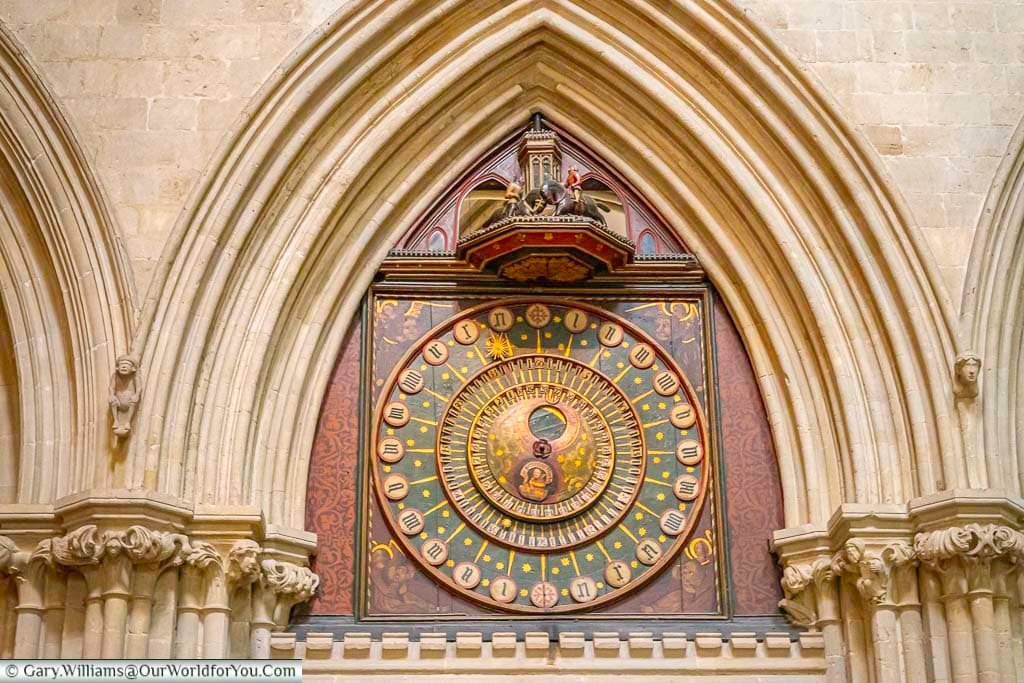
Another unique feature of Wells Cathedral is the astronomical clock. The medieval clock, circa 1390, is one of the oldest clock faces in the world. On the quarter hour, when the bell chimes, you can watch jousting knights rotate around above the clock face.
Just beyond the astronomical clock is the Chapter House and one place not to be missed. The sea of stone steps that guide you up to the Chapter House have borne the weight of footsteps since 1306. This stunning octagonal tower is where the local clergy would congregate to discuss cathedral business.
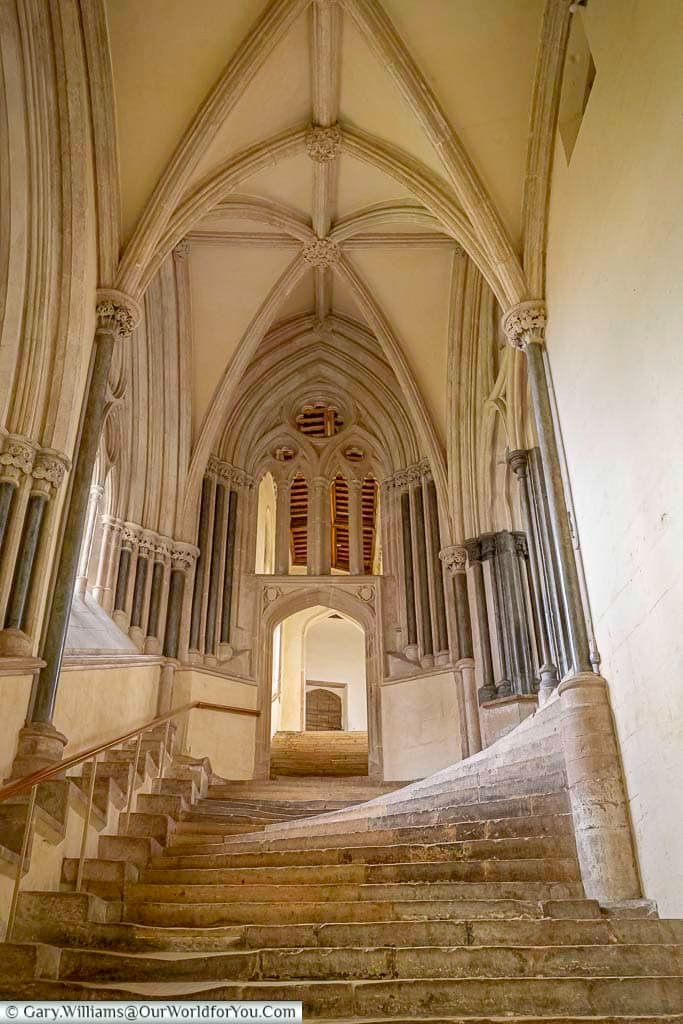
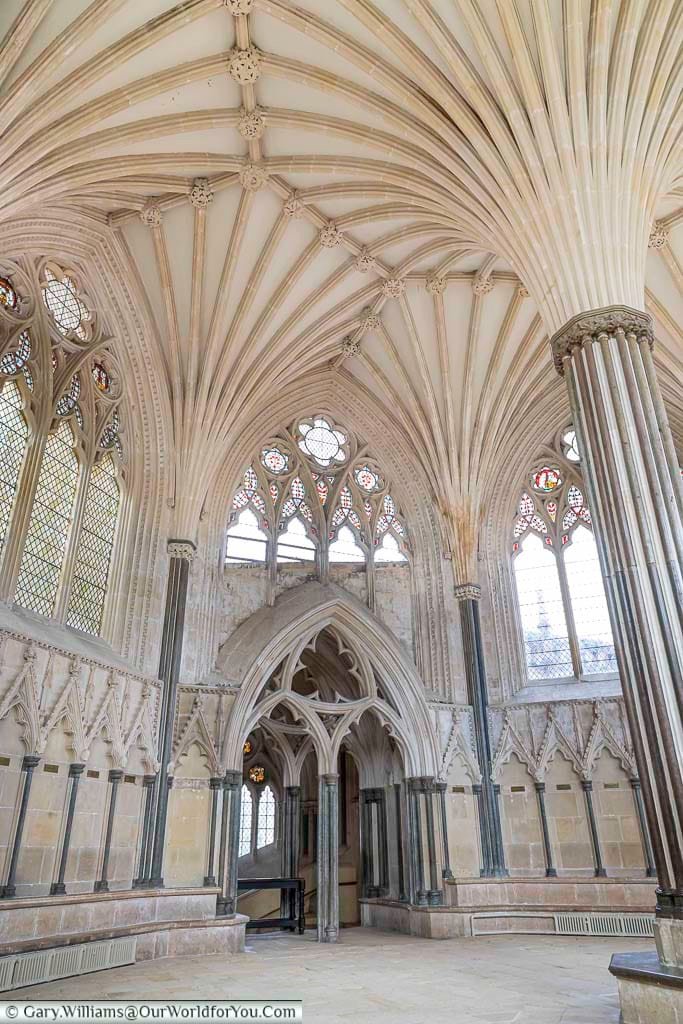
Before you leave Wells Cathedral, ensure you visit the ancient library, which was built during the 13th and 14th centuries. You’re able to see and inhale the waft of historic leather books which are kept in the chained library.
Additionally, stroll amongst the tranquil cloisters and explore the cathedral gardens.
If you’re visiting Wells for the day, take advantage of purchasing a joint day ticket to Wells Cathedral and The Bishop’s Palace and Gardens.
Wells Tourist Information
Exploring Wells Cathedral Green
Strolling Vicars’ Close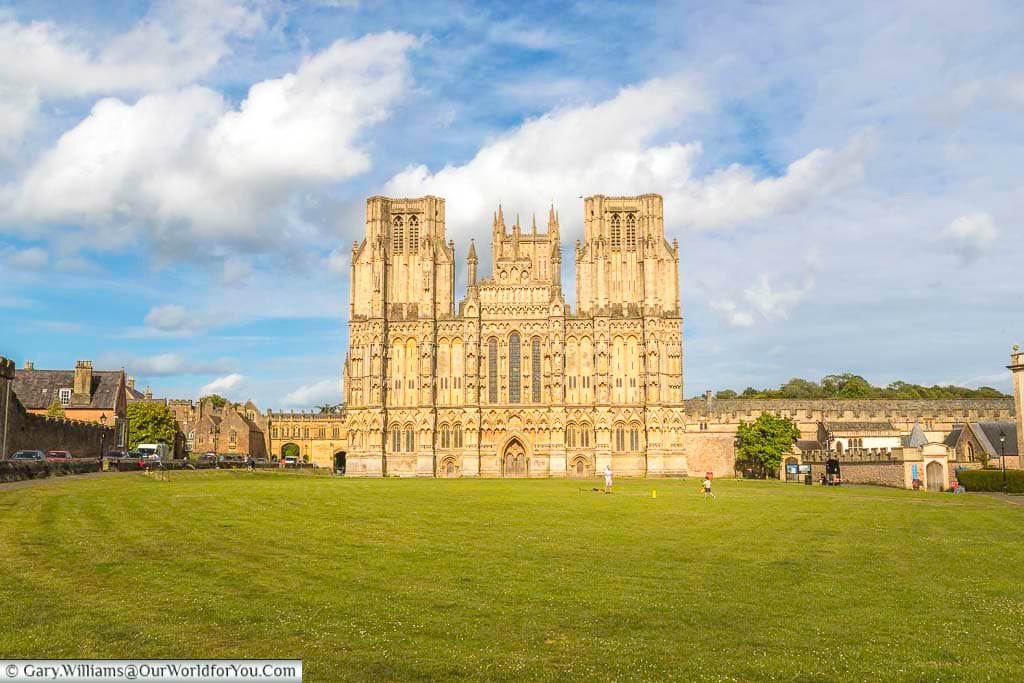
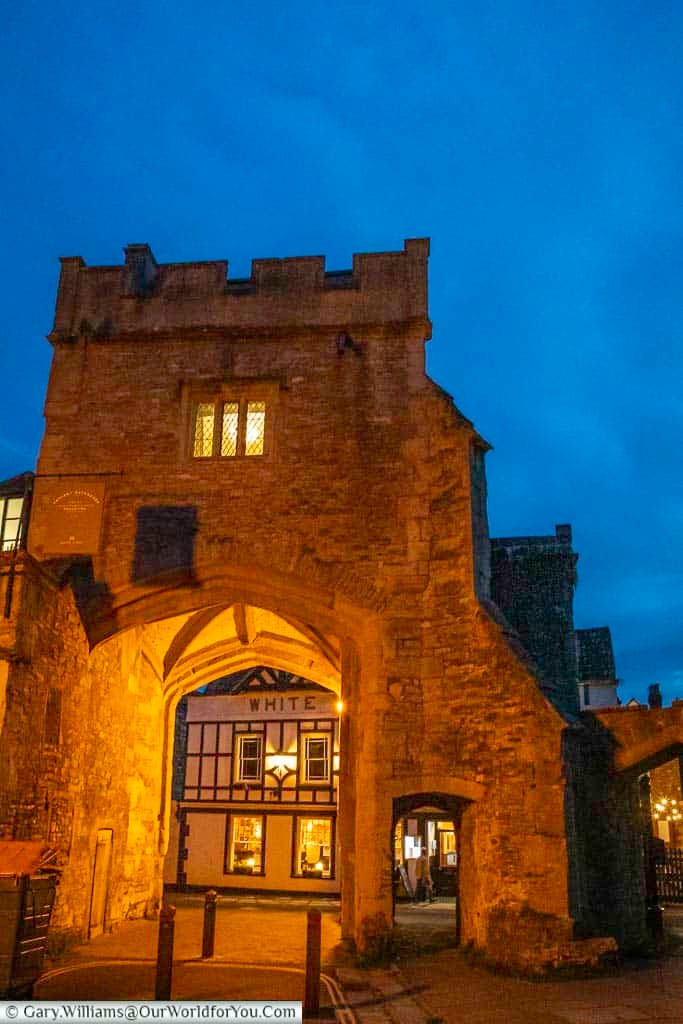
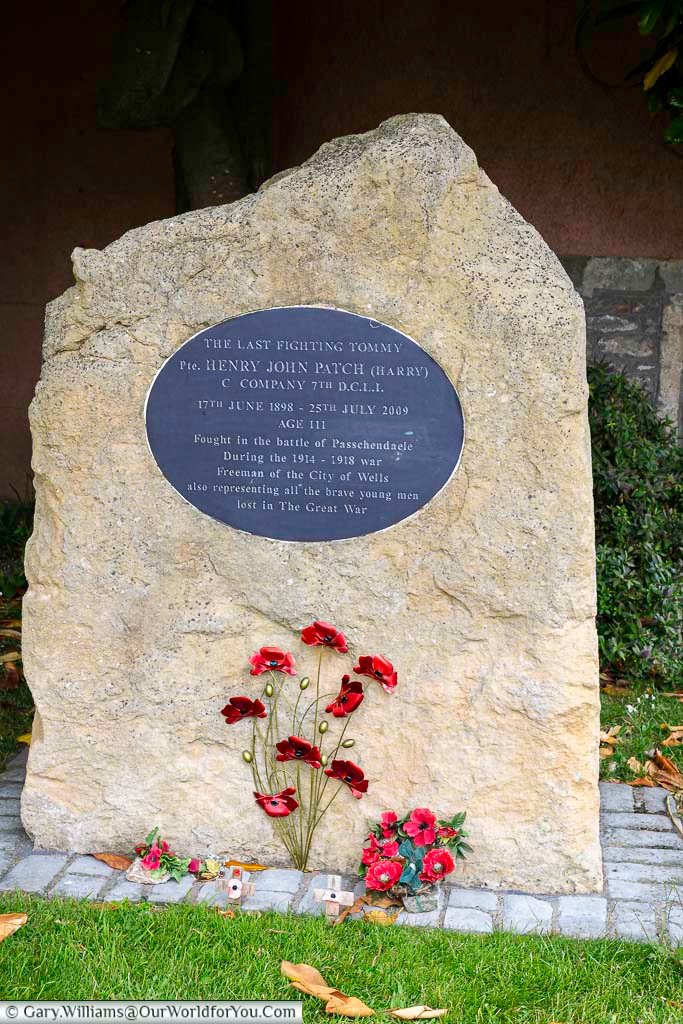
As we wander to the left of the cathedral along Cathedral Green here is the Wells & Mendip Museum, the Wells Cathedral Music School, and also a touching memorial to Harry Patch.
Harry Patch was known as “the Last Fighting Tommy”, he was the last surviving trench combat soldier of the First World War from any country when he died on 25th July 2009 at the age of 111 years and 38 days.
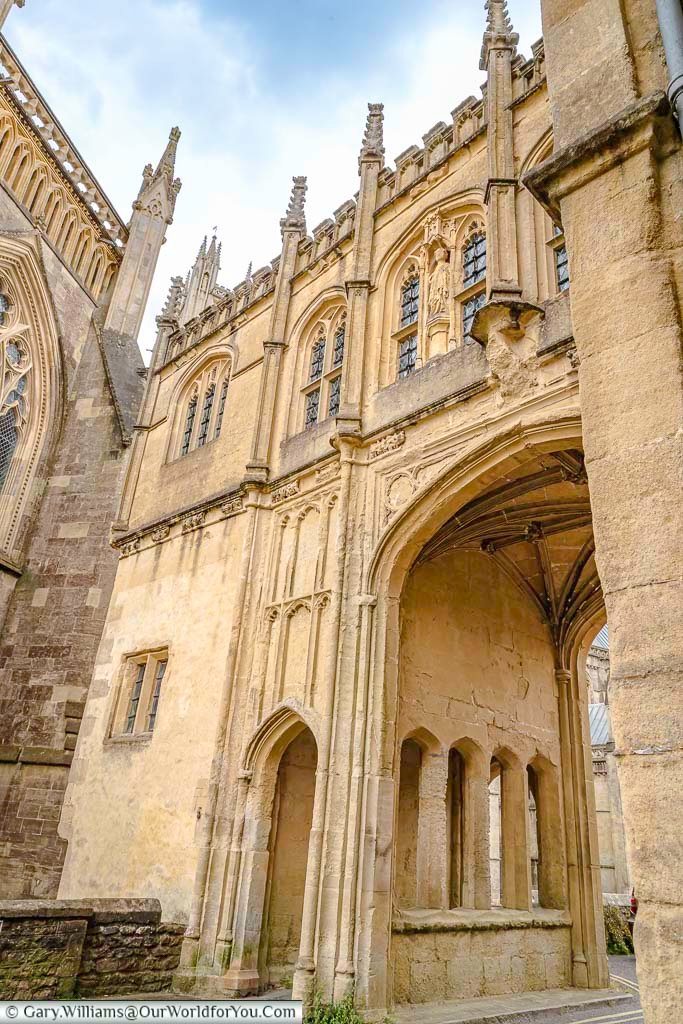
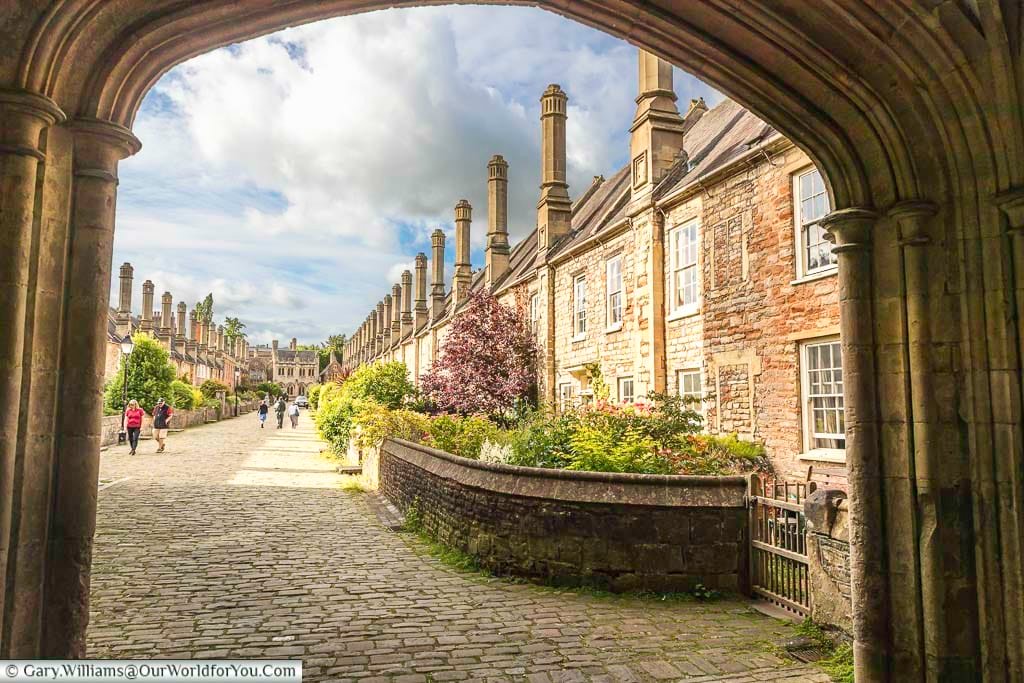
When you wander into Vicars’ Close, you will find it picture-postcard perfect. This 15th century residential Street is Europe’s oldest purely residential street, with its original buildings intact. There are 27 residences, all Grade I listed buildings that appear to be mirror images of each other.
When the chantry priest’s homes were originally built between 1348 and 1430, there were 44 cottages. The Vicars' Chapel and library are at the far end of the 460 feet close (140m).
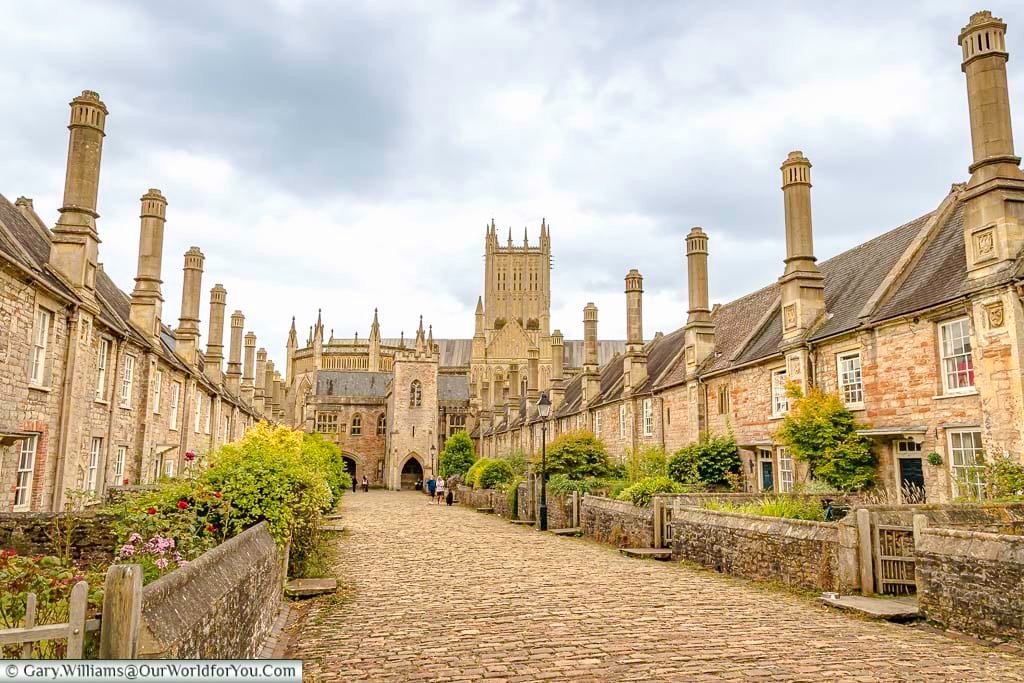
The quadrangle appears longer than it is; the false perspective is achieved by building the houses at the upper northern end nearest the chapel 9 feet (2.7 m) closer together than those at the lower southern end.
A large restoration project will soon be underway to continue to preserve and maintain this incredible slice of Wells’ history.
Exploring The Bishop’s Palace
Eight centuries of history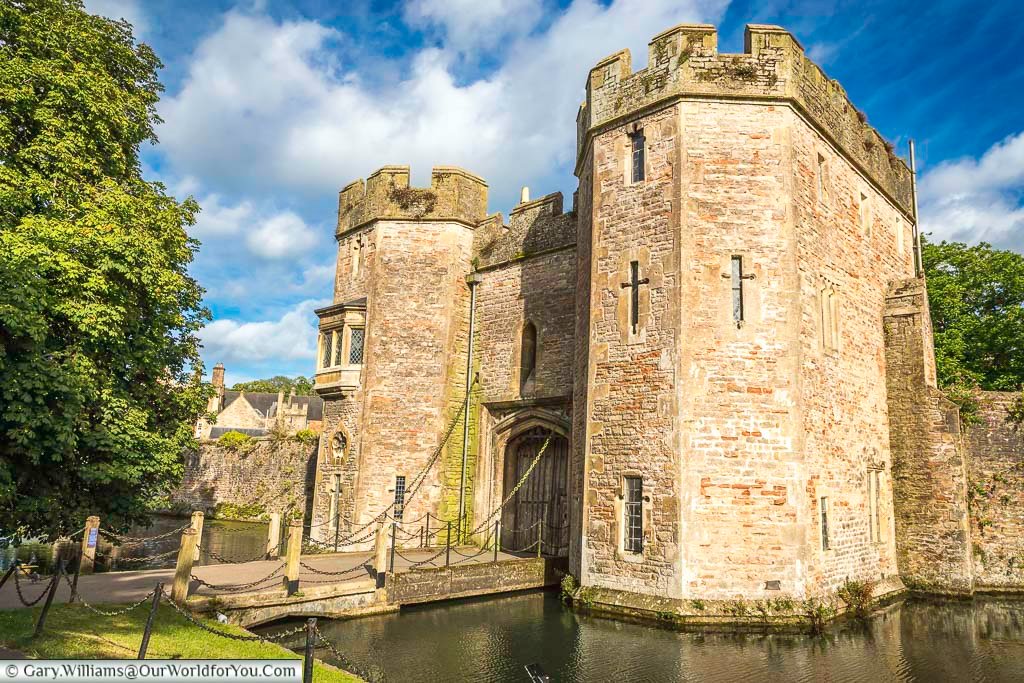
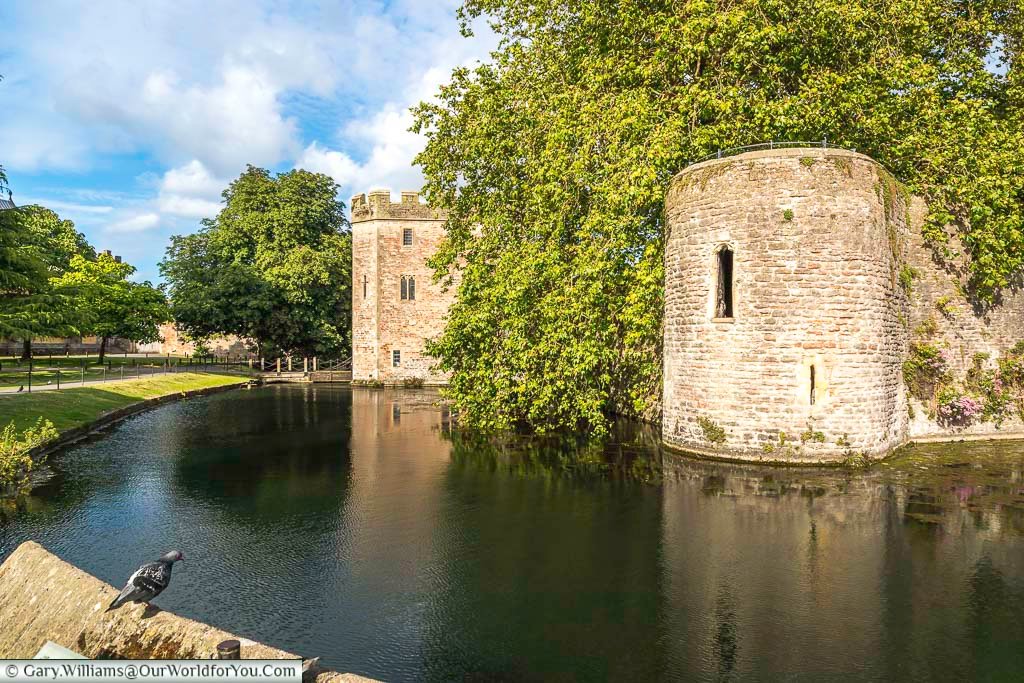
You’re able to stroll up to the Gatehouse, which has a portcullis and drawbridge and wander around the moat free of charge. Hopefully, you’ll spot the family of swans swimming gracefully around the moat.
These beautiful swans have been trained to ring the Gatehouse bell for food. By pulling on the rope at the gatehouse window, the bell would chime as a cue for some tucker.

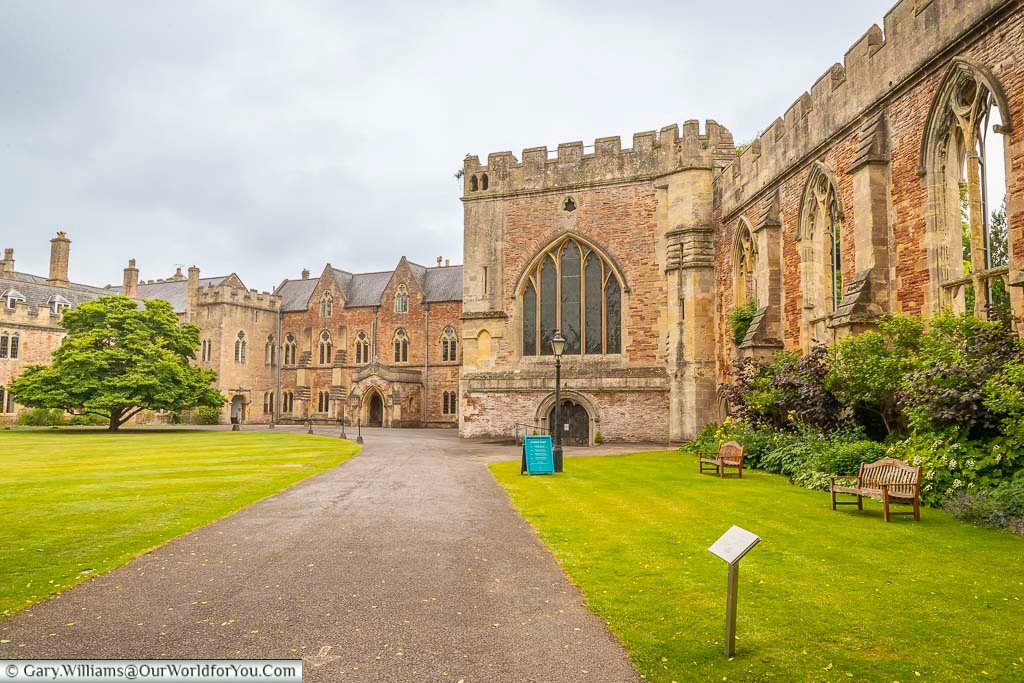
Armed with our Bishop’s Palace tickets, we stroll around the sweeping lawn and enter the Palace, built by Bishop Jocelin in 1210. Over the following 800 years of successive bishops, they have all left their mark.
Strolling around the palace, you gain an understanding of how the bishops lived in medieval times and how they used the striking rooms to demonstrate their political power and, often, their wealth.
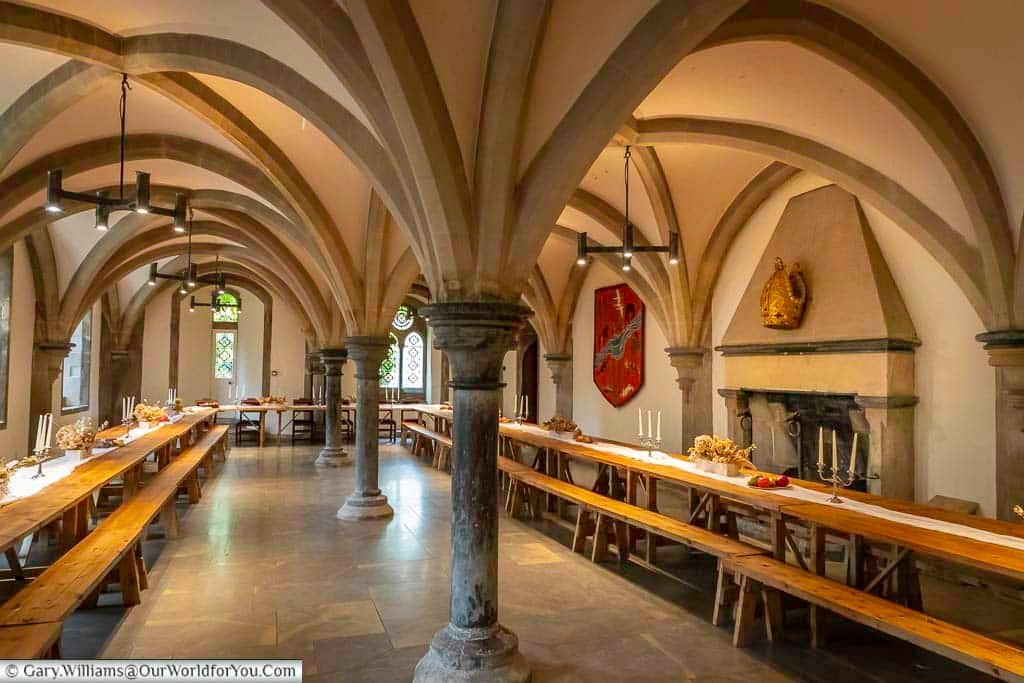
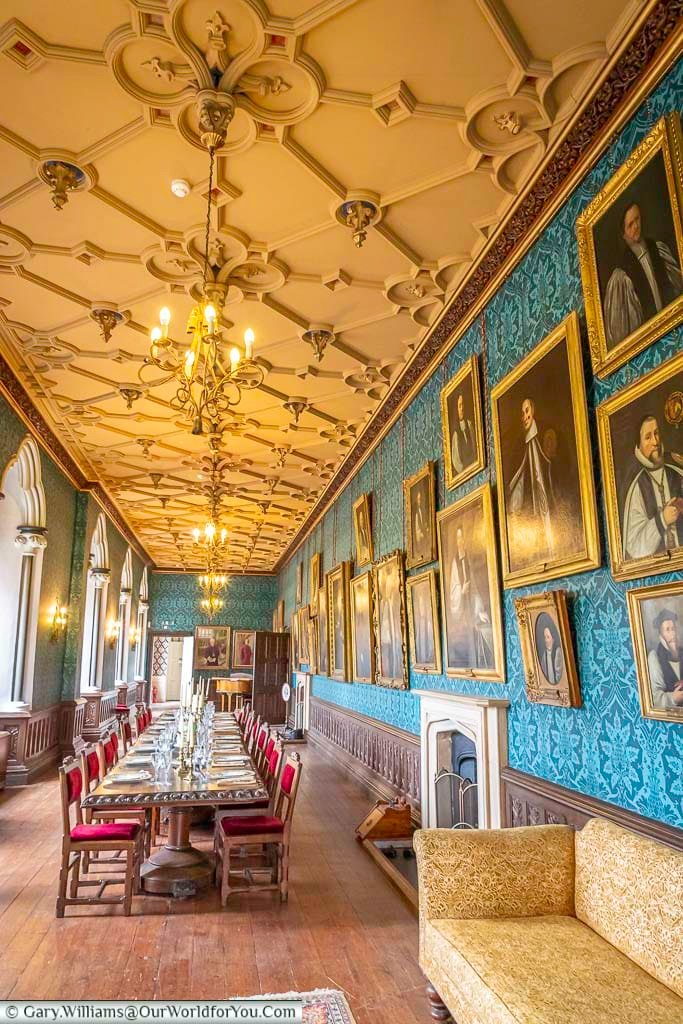
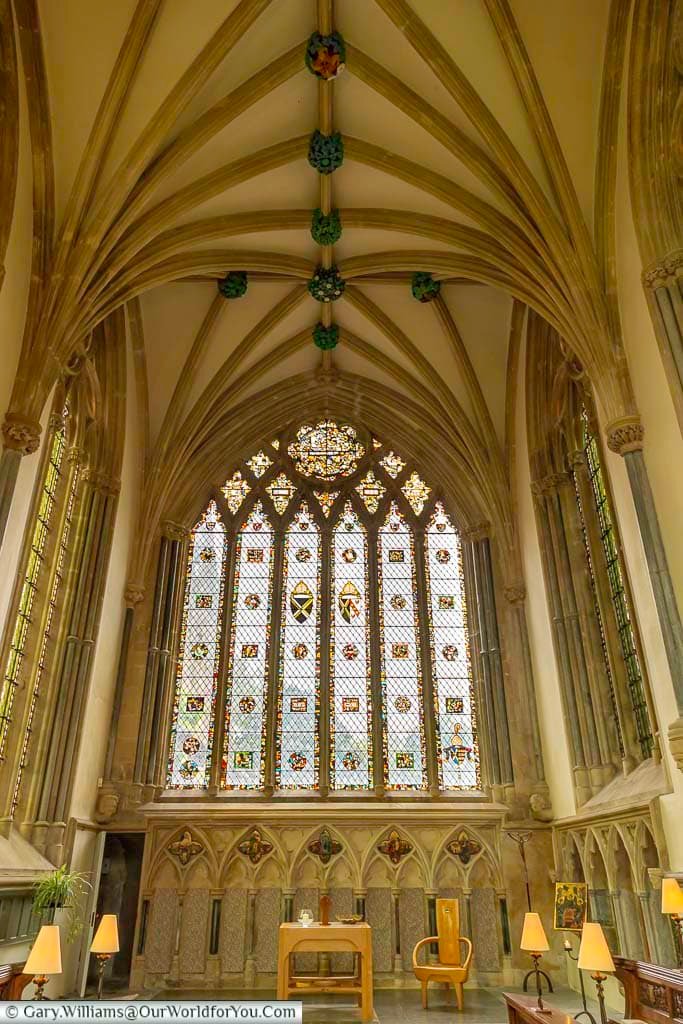
We stroll around the medieval vaulted Undercroft with historic flagstone floors and then continue up the charming staircase to the striking Long Gallery where you can see the portraits of past bishops.
These elaborate and ornate rooms were used by the bishops for entertaining, and the simpler rooms were where the bishops would have worked and slept. Today, fascinating artefacts and exhibitions detail the role of the palace through the centuries.
Ensure you don’t miss a visit to the Episcopal Chapel, which was built between 1275 and 1292 by Bishop Burnell.
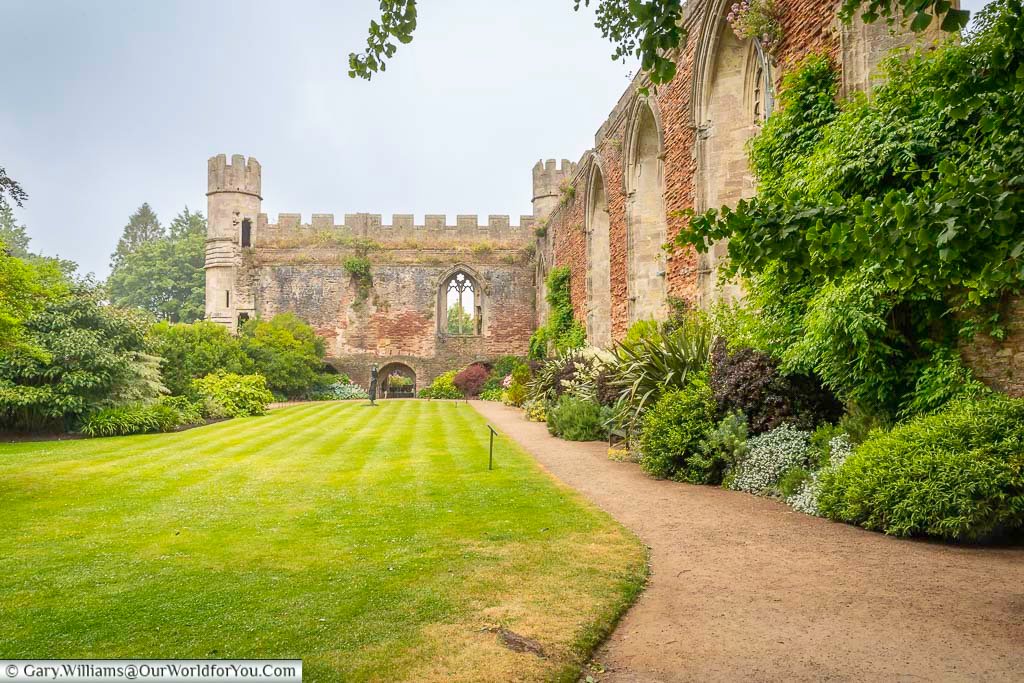
We venture back outside to explore the RHS partner gardens and the ramparts and discover the history behind the Mendip wells.
The Great Hall was also built by Bishop Burnell and now stands as ruins in the beautiful gardens. Even though only the four corner turrets and two walls survive, you can imagine the Great Hall's vast scale reflecting the power that the bishops held within the region.
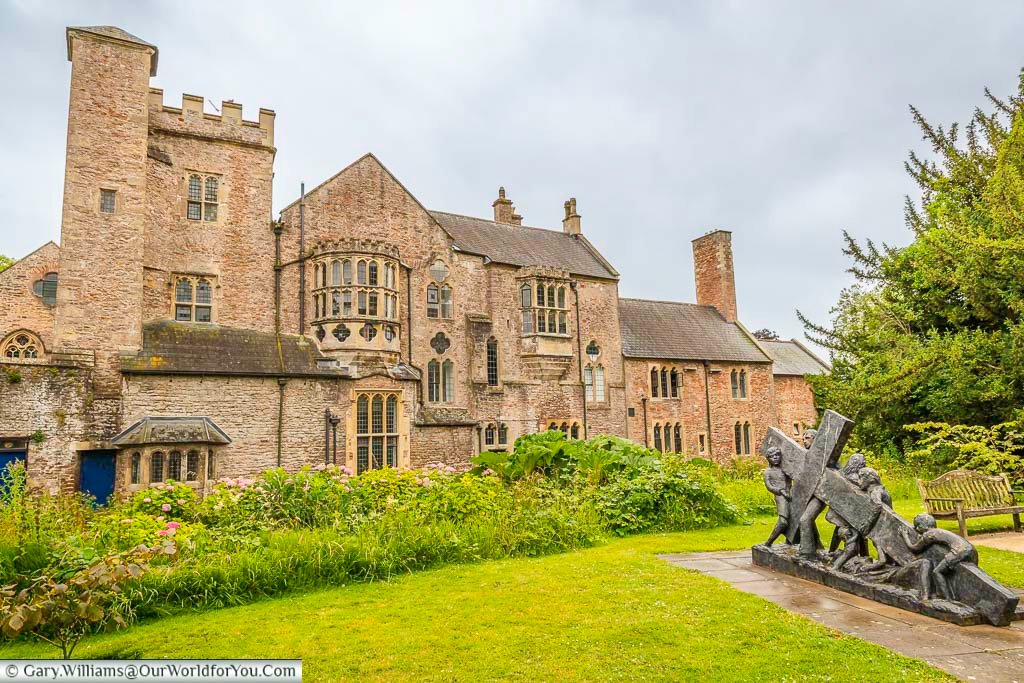
The 14 acres of gardens within the ramparts of the palace are delightful and so tranquil to amble around. The gardens are kept beautifully by the meticulous team of gardeners and offer a peaceful haven to escape from day-to-day life.
It’s time to find the little doorway through the palace walls and cross the moat to discover Wells’s namesake.
Saint Andrew’s Spring, or the well from which the city takes its name, creates the delightful ponds and water pools in the garden and feeds the enchanting moat that encircles the palace.
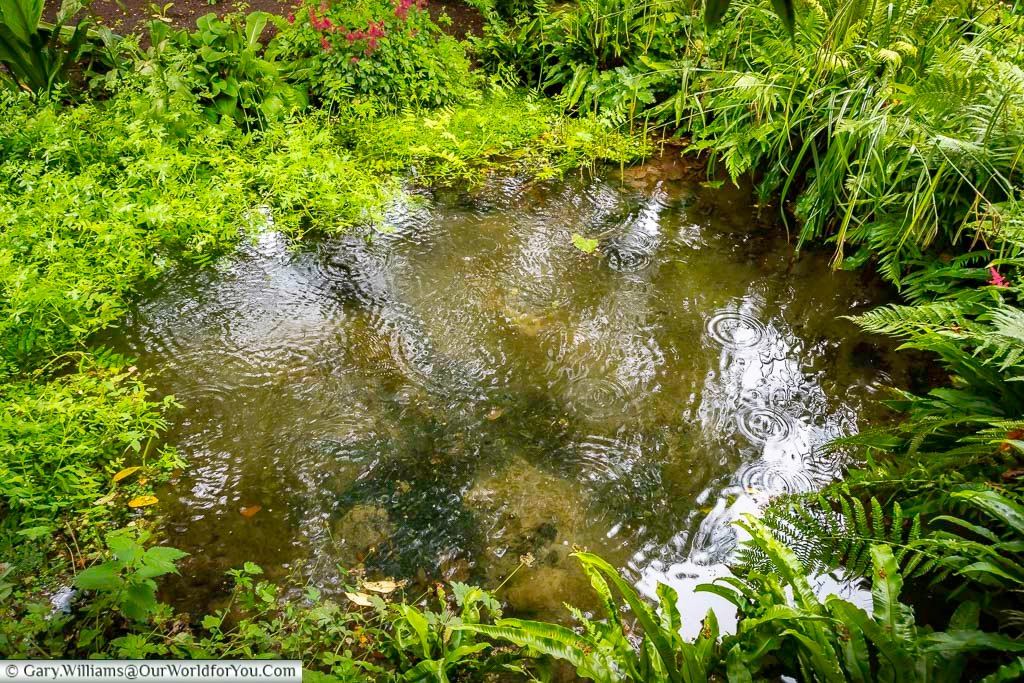
Our video of Wells
We have created a little YouTube video of Wells. Why not take a look?
Also, why not subscribe to our YouTube channel and get the latest clips as we post them?
* This post may contain links to affiliated sites where we earn a small commission at no additional charge to you.
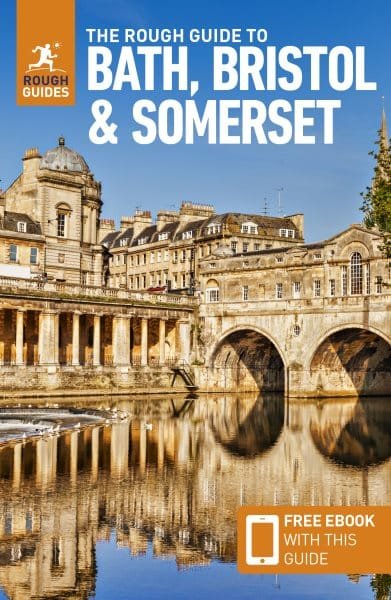

Hello,you two,
Allwell your side I hope.
On a quiet moment we looked at your brilliant write up and pictures of Wells.,A great piece to eat anyone’s appetite.
We are on the way home now having been on a 12 day cruise around Japan and on the way back, 8:days in Pondicherry, Tamil Nadu. It sounds nuts , but it is a gastronomic wonder. Excellent restaurants.
However the contrast between Japan and India is 6,000 %
Taxi coming soon. A 3 hour trip to Chennai Airport for the huge cost of 35 quid ( and it’s a CRV ), The a flight to Addis Ababa ( 6 hour ) leaving at 2:00 in the morning. Change in Addis for Harare ( 4 hours ) into the arms of Rory to pick us up. We will be bushed.
Love to you both and give our salaams to Barb and Pete
Wow, that sounds like a fantastic trip. I can’t wait to hear more about it when we see you next.
Yes, Wells is a beautiful little city; we’d never visited it before, so it was a lovely surprise. We then went on to Salisbury for a couple of days, another pretty cathedral city.
Take care
Janis & Gary